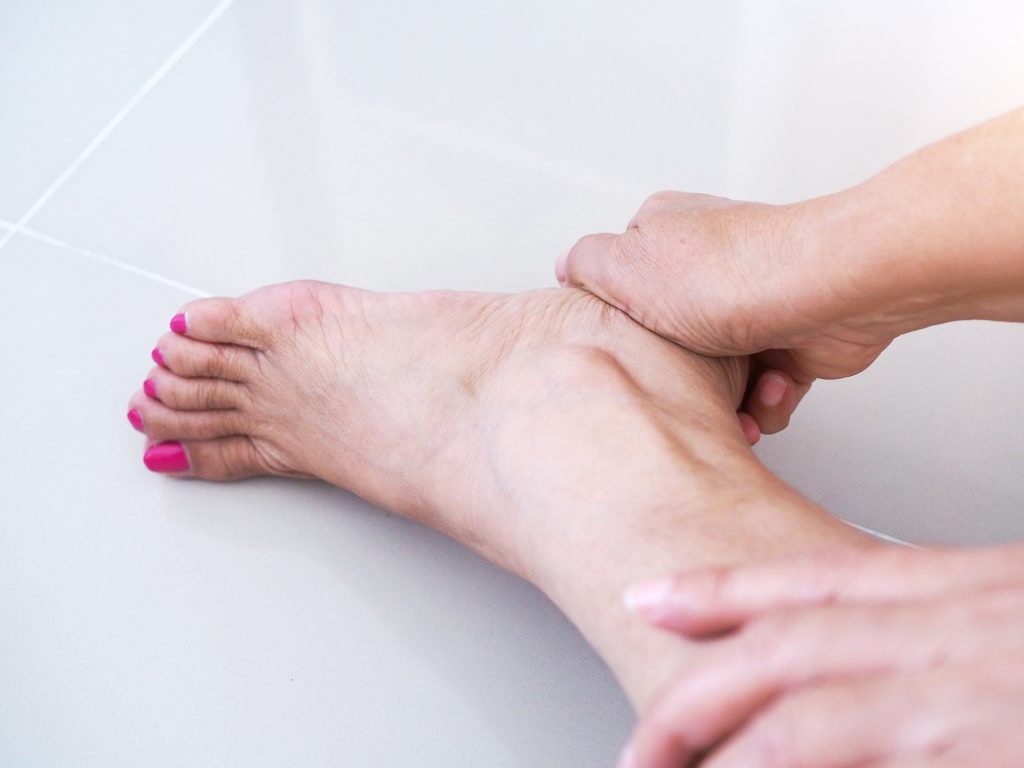Achilles Tendonitis Treatment Begins At Home
If you’re feeling mild or severe pain or tenderness at the back of your leg and above your heel, you might be experiencing Achilles tendonitis. After consulting your doctor, it’s a great idea to start implementing some at-home care and prevention techniques into your routine in order to treat this condition.
Achilles tendonitis is really a degeneration of the Achilles (uh-KIL-eez) tendon, the band of tissue that connects calf muscles at the back of the lower leg to your heel bone. A more appropriate name would actually be ‘Achilles tendinosis’ – which specifically refers to the accumulation over time of microscopic injuries to the tendon that do not heal properly.
Whatever the cause, most cases of Achilles tendinosis can actually be treated with persistent, relatively simple, at-home care under your doctor’s supervision. Moreover, self-care strategies are usually necessary to prevent recurring episodes.
If you think you might be suffering from Achilles tendinosis, here are some helpful tips for speeding up your recovery and avoiding any future problems!
Lifestyle and home remedies
After recognizing Achilles tendinitis or tendinosis, trying these at-home care methods can support effective treatment:
- Rest – Avoid activities that increase the pain or swelling. Don’t try to work or play through the pain. Rest is essential to tissue healing. But this doesn’t mean complete bed rest. You can do other activities and exercises that don’t stress the injured tendon, especially low-impact activities, such as bicycling.
- Ice – To decrease pain, muscle spasm and swelling, apply ice to the injured area for up to 20 minutes, several times a day. Ice packs, ice massage or ice water slush baths all can help. For an ice massage, freeze a plastic foam cup full of water so that you can hold the cup while applying the ice directly to the skin.
- Compression – Because swelling can result in loss of motion in an injured joint, compress the area until the swelling has ceased. Wraps or compressive elastic bandages are best.
- Elevation – Raise the affected ankle above the level of your heart to reduce swelling. It’s especially important to use this position at night.
Keep moving!
Although rest is a key part of treating Achilles tendinitis, prolonged inactivity can cause stiffness in your joints. Move the injured ankle through its full range of motion and perform gentle Achilles tendon stretches to maintain joint flexibility. Check with your doctor or your therapist prior to beginning a motion program while you are still experiencing pain.
Anti-inflammatory medications
Like Achilles tendinitis, inflammation can be involved in the initial stages of the more long-term tendinosis. You can still try non-steroidal anti-inflammatory drugs (NSAIDs) such as aspirin and ibuprofen (Advil, Motrin, others) or products containing acetaminophen (Tylenol, others) to help reduce the discomfort associated with Achilles tendinitis.
Be sure to talk to your doctor if you feel you need NSAIDs for an extended time because some of these drugs should be used for only short periods — around seven to 10 days — to avoid complications.
If you take NSAIDs frequently or take more than the recommended dose, these medications can cause stomach pain, stomach bleeding and ulcers. Rarely, prolonged use can disrupt normal kidney function. If you have liver problems, talk to your doctor before using products containing acetaminophen.
Instead of reaching for NSAID’s and suffering these side effects, you may want to try a natural pain reliever first with the guidance of your doctor. Dr. Warner developed her product line, Well Theory, to give you options for natural relief.
Her new PEA supplement contains one single ingredient: Palmitoylethanolamide. This is a natural compound produced in the body in response to pain and inflammation.
When taken as a supplement, this fatty acid amide binds to receptors within cells in response to pain, promoting relief and balance.

Prevention
Although it may not be possible to completely prevent Achilles tendinitis (and tendinosis), you can certainly take the following measures to reduce your risk:
- Increase your activity level gradually – If you’re just beginning an exercise regimen, start slowly and gradually increase the duration and intensity of the training.
- Take it easy – Avoid activities that place excessive stress on your tendons, such as hill running. If you participate in a strenuous activity, warm up first by exercising at a slower pace. If you notice pain during a particular exercise, stop and rest.
- Choose your shoes carefully – The shoes you wear while exercising should provide adequate cushion for your heel and should have a firm arch support to help reduce the tension in the Achilles tendon. Replace shoes that show excessive wear. If your shoes are in good condition but don’t support your feet, try arch supports in both shoes.
- Stretch daily – Take the time to stretch your calf muscles and Achilles tendon in the morning, before exercise and after exercise to maintain flexibility. This is especially important to avoid a recurrence of Achilles tendinitis.
- Strengthen your calf muscles – Strong calf muscles enable the calf and Achilles tendon to better handle the stresses they encounter with activity and exercise.
- Cross-train – Alternate high-impact activities, such as running and jumping, with low-impact activities, such as cycling and swimming.
Treating Achilles tendonitis begins with you. Again, be sure to first consult your doctor or an orthopedic specialist to come up with a plan that works best. Implementing at-home care and preventative measures into your daily routine ensures that your recovery process is fully supported.
If you think you need guidance on how best to relieve your Achilles pain, we can help. Click below to schedule your appointment today!






